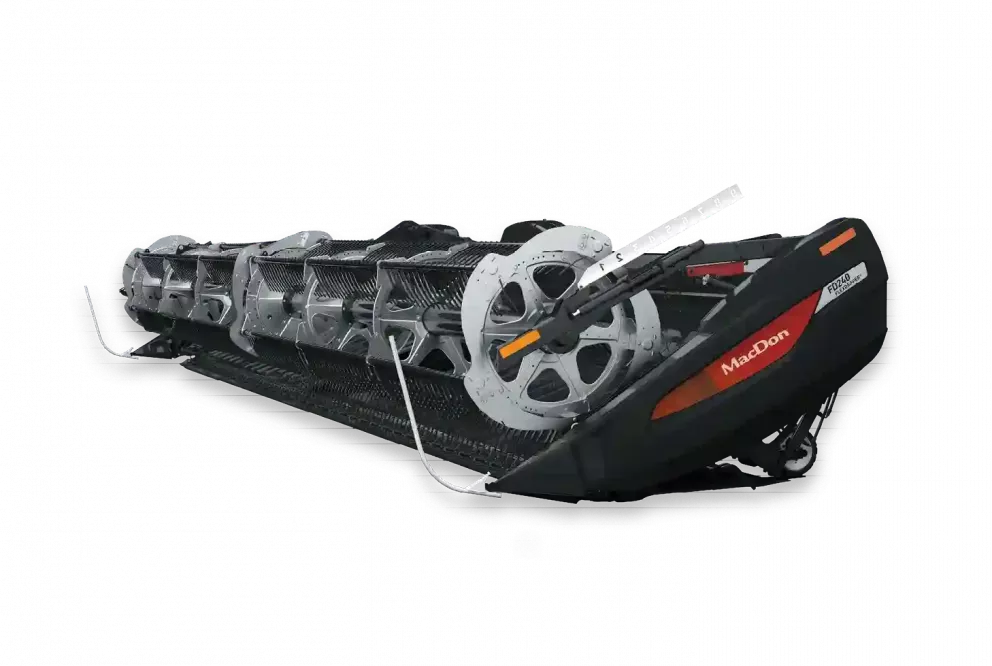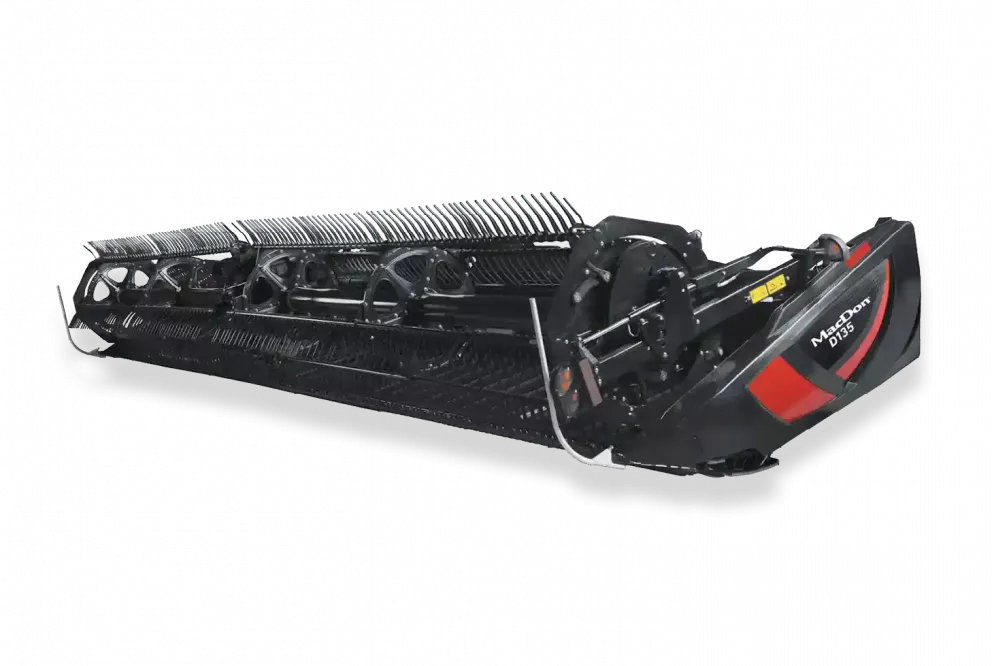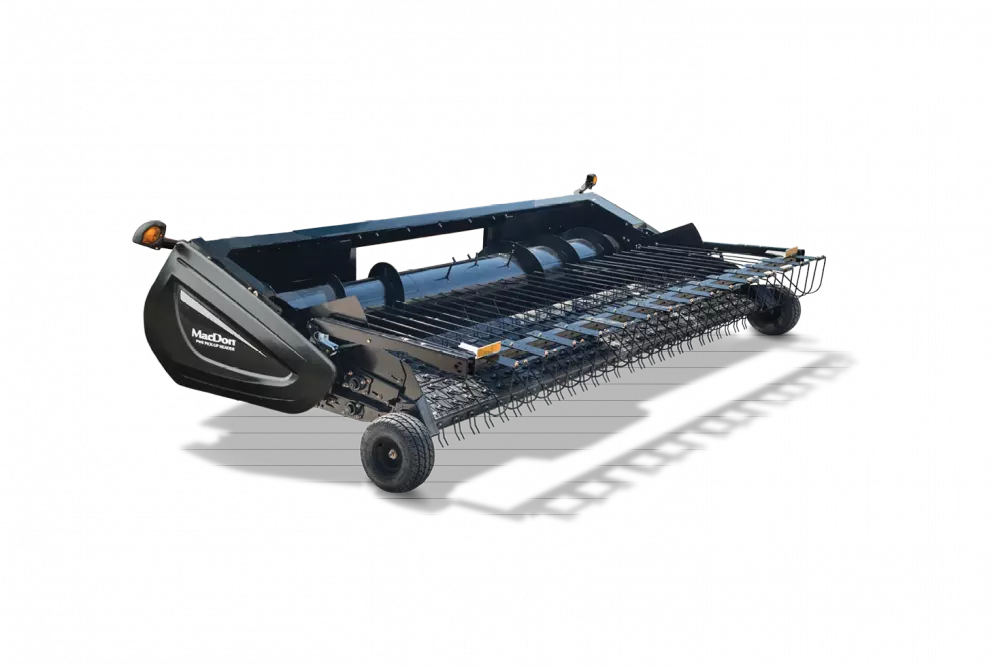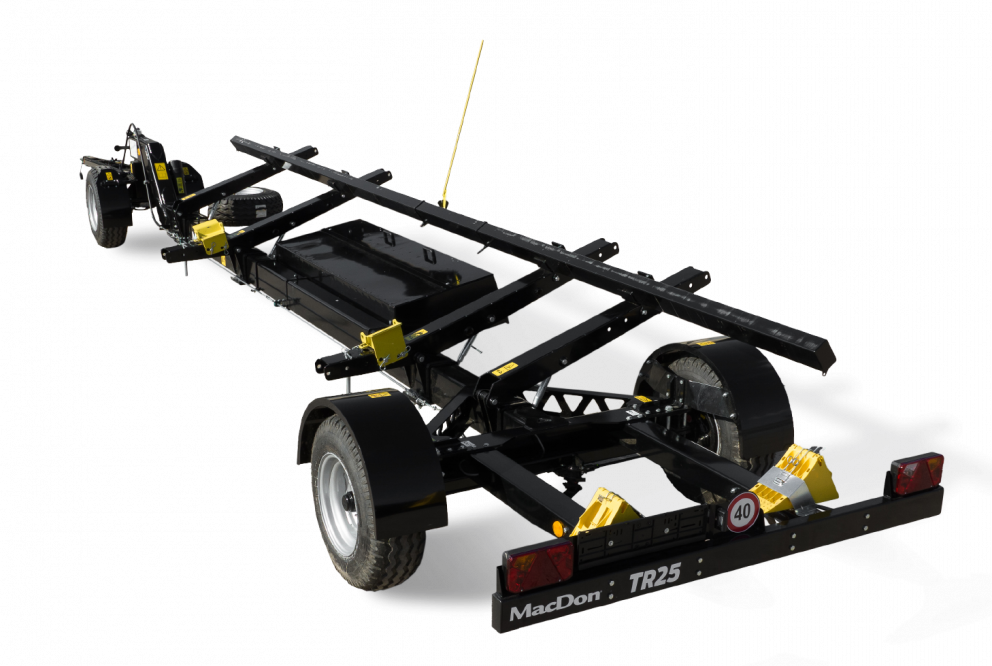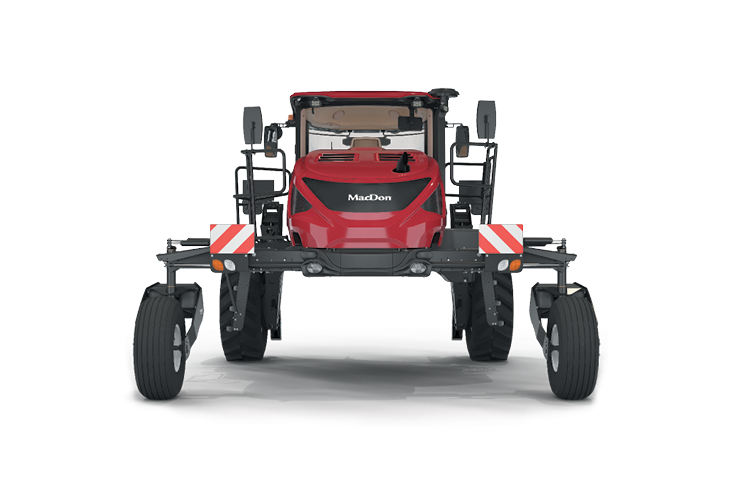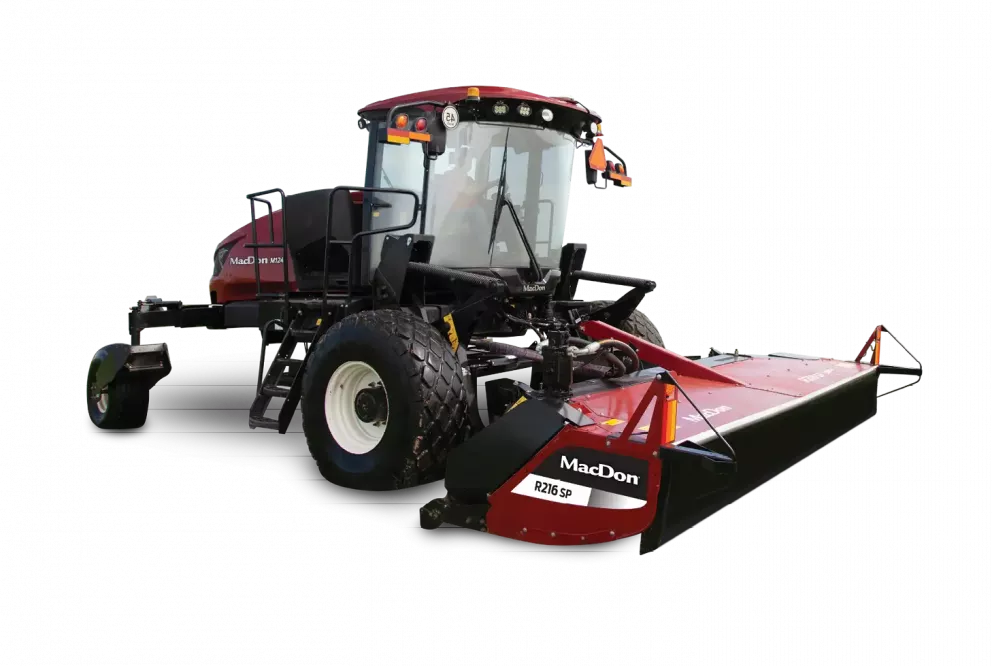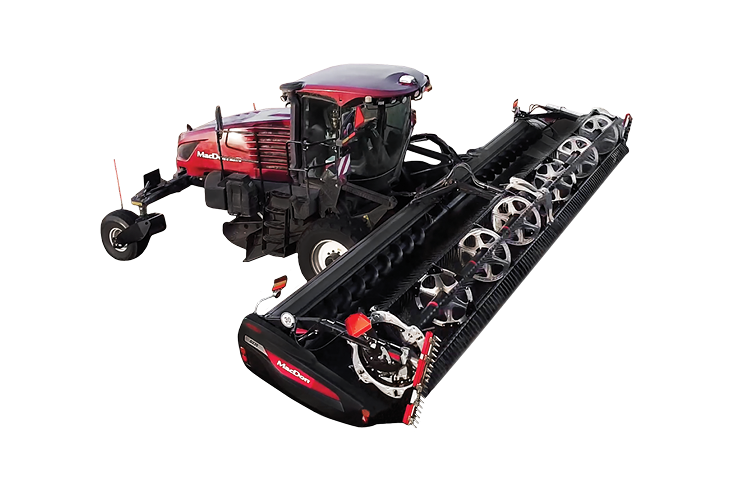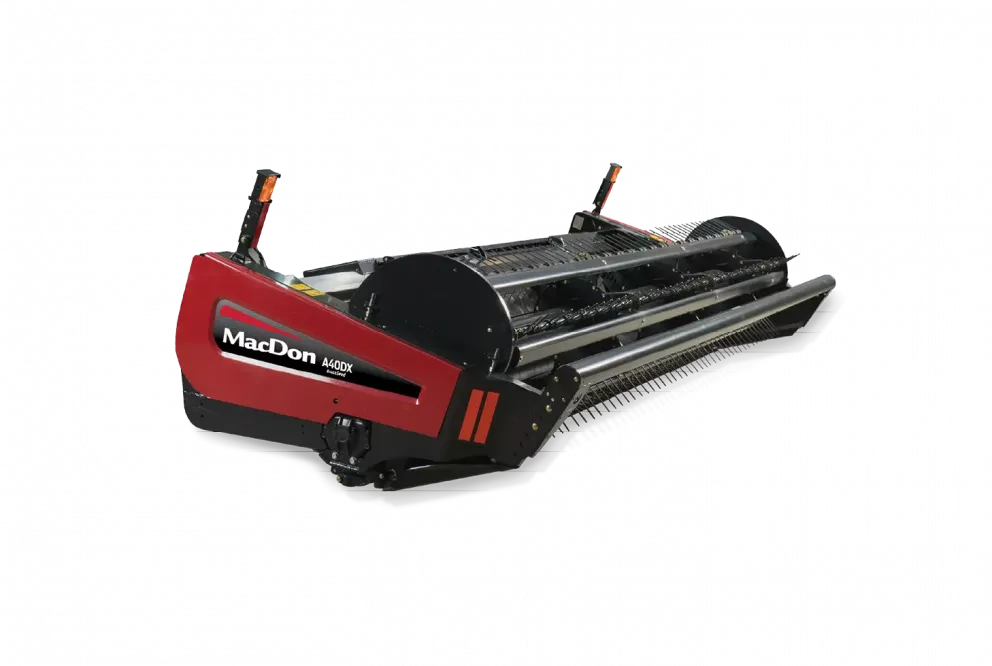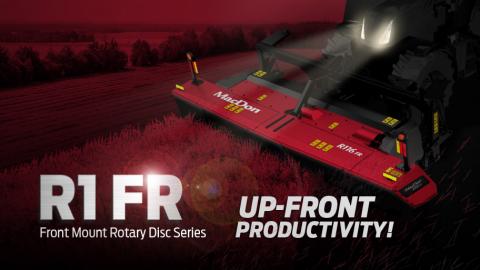No Mow Limits
A late fall snowstorm led Ivan Hissong’s dairy to MacDon® and eventually the new R1 Disc Mower.
It’s funny how life is. We can persist using the same brand of product for years, even when we know that there might be something better out there. But then one day something happens that forces us to try something different and once we do, we never go back. Ivan Hissong had an epiphany like that back in the fall of 2011 when Halloween delivered both a trick and a treat to his dairy farm in south central Pennsylvania, which he runs with his father Dennis, uncle Larry and cousins Andy and Kirby, along with 15 employees.
Halloween’s trick was a freak snowstorm that dumped several inches of snow on his fields. “We had several hundred acres of oats yet to harvest and this snow had basically flattened these oats,” said Hissong. “We realized that we needed to try something different, because our existing disc mowers would never get the job done with extreme conditions like that.” It was that realization that would lead the Hissongs to Halloween’s treat. “We had heard that MacDon was the Cadillac of disc mowers in the west, so we felt that we had to give MacDon a try. Luckily, Hoober Incorporated in Chambersburg had a 13’ (3.96m) R85 Pull-Type sitting on the lot. Being a good local dealer, Hoober’s agreed to let us demo the unit.” Hissong says that the MacDon mower delivered as advertised, as they were able to save all of their crop.
“If we hadn’t had the R85 most of those oats would have stayed in the field. I think the R85’s flat cutterbar was the difference and the lift kits on the discs also helped.” In fact, the R85 performed so well that the Hissongs didn’t want to stop using it. They were able to convince the dealer to rent it to them until they could get them a 16’ (4.88m) version of the machine for purchase. Hissong reports that their decision to switch over to MacDon’s disc mower dovetailed nicely into other changes they were making on the farm around that time. “Before the R85 we used to run two mowers and harvested more acres, but since then we’ve decided to go with one machine and trade more often, because we’re growing more cereal grains and less alfalfa.” But don’t let the one machine fool you; the Hissongs still do a lot of cutting as they have a lot of hungry mouths to feed on their dairy farm of 750 milking cows, plus another 500 to 600 replacement animals. “We farm over 1,500 acres (607 ha.) and most of that is double cropped because we have so many animals to feed.
We grow about 150 acres (60.7 ha.) of alfalfa, which we cut five times a year. We also plant about 400 acres (161.9 ha.) of oats, 250 acres (101.2 ha.) of triticale and about 100 acres (40.5 ha.) of timothy and dry grasses, all of which we cut with a disc mower.” The Hissongs also grow, wheat and some soybeans, but they use a combine with a MacDon FlexDraper® to cut those crops.
Their biggest challenge, from a cropping standpoint, is the dry summers they can have which sometimes force them to supplement their crops with purchased grain. “We are pretty self-sufficient when it comes to forage, unless we have drought conditions, which we’ll have about two out of every eight to ten years. That's why we began double cropping about five years ago, just to get the most out of our land.” Whether they are harvesting in a good year or bad, Hissong says that the R85 they acquired back in 2012 ticked off some of the key boxes for what they look for in a good mower. “First, we look for a cutterbar that’s built heavy because most of our land has limestone rock. While most of our rocks are taken care of, from time to time we still hit the odd rock.
You have to have a heavy, well-built mower like MacDon’s to be able to go 10 miles an hour (16 km/h) over those rocks and not break anything. With our previous brand we had a cutterbar failure in only the second year of owning it, but in four years with the MacDon we had no cutterbar failures at all. It’s a much more dependable machine than what we were using before.” Another thing the Hissongs look for in a disc mower is a conditioning system that uses rolls instead of flails. “With flails you have to be careful that you are not chopping and slicing the crop, especially in crops like oats or triticale, which usually have thick juicy stems in the spring and the fall.
Rolls however, allow us to be a bit more delicate with the crop, and bend it over just right so that the stem breaks enough to allow it to dry.” “We had tried almost every brand of mower out there that we could get from local dealers and the R85 was by far the best one that we could find. The thing we liked about it was that its rolls were the widest in the industry. Wider rolls let us cut all our different crops without changing – or babysitting if you will – the conditioning system.” As happy as the Hissongs were with their R85, they decided to upgrade to MacDon’s R1 Series Pull-Type Disc Mower in the fall of 2015 as it offered a couple of important advantages for their operation. Strongly influencing that decision was the new optional transport package which allows the operator to quickly reduce the mower from 16’ (4.88m) in width to 9’ (2.74m) for road transport. “The new transport package on the R1 was a big selling feature for us. While we like the extra width of a 16’ (4.88m) mower because it allows us to harvest more crop at a time, transporting a wide machine on our roads is very challenging because of all of the hills and blind corners that we have.”
“The biggest waste of time with the cart was trying to get the machine on the cart and folded up. It would sometimes take 15 minutes to make sure you had it on the cart properly. Those carts were such a hassle that we got to the point that we didn’t use them anymore, so transporting those machines definitely wasn’t as easy.” Now with the R1, Hissong says it only takes him 30 seconds to shift to transport mode and best of all, he doesn’t have to leave the cab to do it. “The R1’s transport package definitely saves us time and headaches because we do not have to worry about running into telephone poles, trees, or whatever the case might be. We can even plant our corn closer to the lanes because we don’t have to worry about knocking it down with the mower when we go from field to field.”
One more unexpected bonus of the new Road Friendly Transport™ package is that it gives the machine a smaller footprint when storing it. “It gives you the option to park it in a smaller shed for servicing or storage. With the R1 you only need a 10’ (3.05m) wide door, while with a 16’ (4.88m) machine you need a 17’ (5.18m) or 18’ (5.49m) wide door. The other big feature of the R1 that prompted the Hissongs to upgrade was its 129” (327cm)conditioning rollers, a full 11” (28cm) wider than on the R85. “Just do the math and you can soon figure out why the R1 conditions so well. Instead of trying to force 16 feet (4.88m) of crop through 8 foot (2.44m) rolls like on some machines, we’re now putting that 16 feet (4.88m) through almost 11 feet (3.35m) of rolls. Wider rolls mean even less wear and tear on the machine”
Another feature on the R1 that Hissong appreciates is how the forming shields can be adjusted quickly without the use of tools. “Being able to change from windrow to swath in a matter of seconds gives us options. For example, if we are mowing alfalfa in the morning and it’s too wet we will swath the crop out. But then if it dries up in the afternoon and we are still mowing we’ll narrow the baffles and lay a windrow. That allows us to mow all 150 acres (60.7 hectares) of our alfalfa down in one day, something we couldn’t do as easily with previous machines.
”Beyond easier transporting, better conditioning and the ability to adjust the windrow, Hissong says that the ultimate test of any mower is its ability to cut, and here the R1 has not disappointed. “Grass is the easiest crop to mow, but it takes a special type of mower to properly mow off cereal grains like triticale and oats, particularly when they have thick juicy stems. Oats can be an especially tough crop to harvest because it is a very coarse crop and doesn’t flow very evenly on its own. But in our experience, MacDon mowers do a superb job of cutting crops like that. In fact, I even had a neighbor comment last spring on how clean our triticale fields were.” “MacDon has certainly lived up to its reputation of being a Cadillac.”
